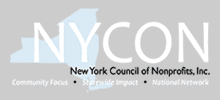What are some major trends effecting all of us?
- State budget
- Energy costs
- Multiculturalism/demographics
- Workforce
- Health care coverage
- Border/visa issues
- Competition for money (not enough)
- Growing needs (do more with less)
- Board member profile
- Volunteer base
- Cost of visibility
- Recruiting board
- Technology needs
- Multitasking
- Focus on projects (money is more about projects than mission)
- Cusp on change
- Priority to collaborate
- Still have hope and positive outlook
What are obstacles to collaborations and partnerships?
- Think we need to compete (going after the same $ and clients)
- Time commitment
- Focus on self preservation (not community need)
- Trust
- Politics (backroom deals)
- Ignorance of other organizations (finding the right partner)
- Lack of networking/personal connections
- Opposing different organizational philosophies/policies and procedures (different missions and different priorities and funding streams)
- Geographical distances
- Identify overriding (catalysts/challenges) that unite complimentary services
- Knowledge how to make collaboration work
- Media awareness
- Rhythm of the year (finding the right time)
- Transition and habit
- Self-serving
- Access to CEO’s
- Less response from corporate America ($, programs)
What are the resource benefits to partnering?
- A joint training or shared space
- Shared training- each agency open in-services to others
- Eliminate duplication of services
- Technology shared resources
- Nonprofit resource center (online/directory)
- Expertise in serving specific populations (ex- help agency x better serve at risk kids, refugees, mentally ill)
- Together we accomplish more
- Save $
- Combine staff and volunteer efforts
- Highlight nonprofit contribution to community
- Group purchase (discounts)
- Alliance of nonprofits
- Nonprofit resource center
- Strength in numbers (improve visibility)
- Synergies with complimentary programs
- Specialty bank (human resources)
- Homegrown resources
- Shared financial expertise
- Grant writing
- Data sharing
What is our biggest benefit to the community?
- Willingness to work with City to improve/solve problems (impact quality of life)
- Common good- serving people
- Economic impact, i.e. workforce, save the economy $$ (we are an economic benefit to the community)
- Collaboration
- Help nonprofits strategize efforts, planning and get outside view from each other to help us improve (better SWOTs)
- Model of cooperation
- Awareness of who is who
- Sharing knowledge- best practices
- Add quality of life
- Maximize funding and all resources (shared)
- Proactive voice for the area
- Together we can serve more people
- Better meet needs of community
- Lots of different nonprofits filling niche needs
- Info sharing= better collaboration and ED’s
What is a big idea for us to do together?
- Resource pool for one another (directory of services/calendar of events)
- Leadership development
- Leadership succession
- Staff development
- Promote nonprofits’ benefit to the community (what if we didn’t exist?)
- Get $$ together
- Centralized menu of support services
- 211 system (referrals to meet needs and provide info)
- Pool of talent for boards
- Resource to one another at Exec level
- Annual Day of Nations
- PR collaboration
- Center for mediation
- Volunteer pool- centralized volunteer screening, recruiting, opportunities
- We have a promising future ahead working together
- Structured partnerships
- Build a training center
What are obstacles we all share?
- Money
- Lack of political influence
- Lack of trust (personal agendas)
- Human resources issues (small or large org- people wearing too many hats)
- Too many 501c3s (there is disagreement on this)
- Negative community self image
- Talk-little action or spinning wheels
- Fear
- Loss of identity
- Competition
- Changing mission
- Behind closed doors same faces
- Complexity of serving people (the people have complex issues)
- Pay/compensation equity
- Competition for employees (small employee pool)
- Hard to find qualified people
- Changing workforce demographics
- Knowing how to effectively collaborate
- Lack of visibility in community
- Understanding each other
- Monolithic media (locally- 1 newspaper, 1 tv station)
- Industry based-employment opps. (need more corporate support and need more volunteers)
- Aging population is a plus and minus













No comments:
Post a Comment